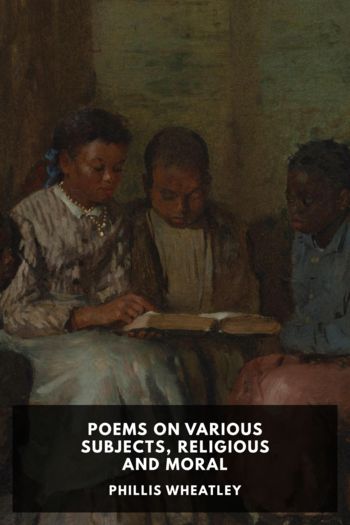Malaria and Rome: A History of Malaria in Ancient Italy, Robert Sallares [reading a book TXT] 📗

- Author: Robert Sallares
Book online «Malaria and Rome: A History of Malaria in Ancient Italy, Robert Sallares [reading a book TXT] 📗». Author Robert Sallares
The earliest dragon cult in ancient Latium seems to have been located in Lanuvium. From there it was transferred to Rome sometime.⁷⁸ In the medieval period the swamps at Maccarese near Ostia were supposedly the home of a dragon, which was killed by a knight from the Anguillara family, to which the territory was awarded as a result. Tomassetti linked this legend to attempts at bonifications to improve health in the area.⁷⁹ A dragon that represents malaria is still visible today on the marble monument in Piazza Dante in Grosseto. It was carved by Luigi Magi in 1846. This monument commemorates the efforts of Leopold II di Lorena ‘Canapone’, the last grand duke of Tuscany, to rescue the Maremma and its inhabitants from the scourge of malaria.⁸⁰ Similar monuments were constructed in other towns that were affected by malaria. For example, Cisterna erected in its main square a sculpture by Ernesto Biondi to commemorate the triumph of health over disease. It won the grand prix at the Paris Exhibition of 1900.⁸¹
⁷⁷ St. Aldhelm, de laudibus virginitatis, xxv, ed. J. A. Giles (1844): Sancti Aldhelmi opera quae extant: Sylvester . . . ad letiferum Romae draconem in clandestino cryptae spelaeo latitantem, qui virulentis faucibus et pestifero spiritus anhelitu aethera corrumpens miserum populum atrociter vexabat, per centenos latebrarum gradus introrsum descendisse fertur, et eandem mirae magnitudinis bestiam, cui paganorum decepta gentilitas ad sedandam furoris vesaniam, fanaticae lustrationis spurcalia thurificabat, inextricabili collario constrictam perpetuae ultionis animadversione perenniter mulctavit, et Romam fallacis idololatriae cultricem a funesto, victimarum ritu Evangelicis assertionibus et segnis pariter coruscantibus correxit.
⁷⁸ Aelian, On animals 11.16; Propertius, Elegies 4.8.3–14, ed. Fedeli (1984). There is no sign of an association with disease in these texts. The dragon cult is presented as an agricultural fertility rite by Propertius.
⁷⁹ Tomassetti (1910: ii. 497). A modern painting in the church of St. George in Maccarese portrays the saint slaying a dragon. Levi (1945: 96–7) and Douglas (1955: 102–7) discussed dragons in Lucania and Calabria, while Horden (1992) considered the dragon motif in relation to malaria in the lives of the saints in early medieval France.
⁸⁰ Santi (1996: 126).
⁸¹ Tomassetti (1910: ii. 390–1).
9
The Roman Campagna
The countryside immediately surrounding the city of Rome, the Campagna Romana, requires attention now. In view of the warm climate for most of the period of the Roman Empire (see Ch. 4. 5
above), malaria was probably even more widespread then than it was in the early modern period, when Giordano described the region as follows:
The Tiber and its tributaries, which flow across it sunk into deep channels, have cut into the uneven surface of this plain, which is almost everywhere uncultivated, with only natural pastures, bare of trees and property, the home of malaria in summer.¹
Tomassetti, an expert on the Roman Campagna, wrote about its fauna as follows:
The very common fly ( Musca domestica) and the mosquito ( Culex pipiens) . . .
the one by day, the other by night, are the greatest nuisance to visitors to the Roman Campagna in summer.²
Even in the vicinity of Rome as recently as the nineteenth century, it could be difficult to obtain precise and trustworthy information about the distribution of malaria. Tommasi-Crudeli, for example, observed that there were many reasons for people to tell lies about malaria:
Sometimes they imagine that you are a collector of taxes, and tell you that a place is pestiferous, although it is not, in order that you may not be induced to raise their assessment. At other times they take you for a would-be purchaser, and assert that the place is healthy, even when it is extremely malarious, in order to induce you to buy. Cases are known in ¹ F. Giordano, chapter entitled Condizioni topografiche e fisiche di Roma e Campagna Romana in Monografia (1881: p. ii): Questa planizie di superficie ineguale, incisa dal Tevere e dai suoi influenti che vi scorrono incassati entro profondi solchi, presentasi quasi ovunque incolta ed a soli pascoli naturali, nuda d’al-beri e di cose, sede di mal’aria in estate.
² Tomassetti (1910: i. 16): La volgarissima mosca (Musca domestica) e la zanzara (Culex pipiens) . . .
l’una di giorno, l’altra di notte, formano la più grande molestia di chi frequenta in estate la campagna romana.
Blewitt (1843: 534) mentioned the abundance of mosquitoes along the direct road from Rome to Anzio (ancient Antium).
236
Roman Campagna
which they will tell you a falsehood, rather than speak the truth, for fear of ruining their trade.³
In the same decade in which he wrote the original Italian version of his book, the Italian government in fact made a great effort to gather information about the distribution and frequency of malaria in every district of Italy for the monumental Carta della malaria dell’
Italia, inspired by Luigi Torelli. This map, completed in 1882, was apparently so large and detailed that it would cover a town square if all the sheets were laid out on the ground side by side. After considering all the difficulties, Tommasi-Crudeli went on to reach the following conclusion:
We must admit that malaria prevails throughout the whole extent of the Campagna, although there are abundant reasons for believing that some localities are much more malarious than others, and that some are entirely free from it.
Obviously it is far more difficult to obtain information now regarding the situation two thousand years ago than it was to assess the then current situation little more than a hundred years ago.
However, bearing in mind the evidence of ancient medical writers





Comments (0)